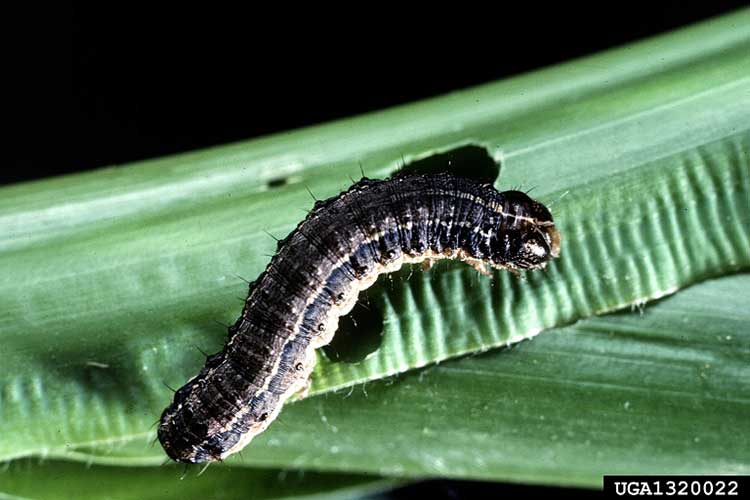
Over the past couple of weeks, I have received numerous calls from curious homeowners and frustrated farmers regarding the dreaded fall armyworm. Damage to established turf is most often aesthetic. However, newly planted sod or sprigs can be severely damaged or even killed by fall armyworm feeding.
This pest has the ability to devour a lawn, pasture or hayfield in a very short period of time. It often goes unnoticed as the caterpillars feed and cause most of the damage at night.
If you see brown patches of bermudagrass which rapidly spreads and enlarges, inspect for armyworms. One of the first signs of a fall armyworm infestation will be several birds clustered on the turf.
Fall armyworms will eat many kinds of grass, but their favorite is bermudagrass that is well fertilized and watered. Homeowners frequently notice them after their grass starts to thin.
Armyworms are susceptible to cold and are unable to survive even the mildest winters in Georgia. Each year, fall armyworm moths are carried by air currents from Central and South America. The size and timing of the initial moth flights are two factors that influence the outbreak potential of the pest.
The four stages of development of the fall armyworm are the egg, larvae, pupae and adult. The adult is an ash-gray colored moth. The front wings are mottled and have white or light gray spots near the tips. The back wings are white with a narrow-smoky brown edge.
The female moths lay eggs at night in masses of up to several hundred in grass and on light-colored surfaces. The eggs are light gray and covered with grayish fuzz from the female's body. These masses darken with age and the eggs hatch within two to four days.
The tiny, light-colored, black-headed larvae (caterpillars) spin down to the ground on silken webs and begin to feed. As they grow, their bodies darken and noticeable stripes appear. When fully grown, larvae may be up to one and a half inches long and vary in color from light green to almost black with several stripes along the body. The face is marked with a light colored inverted "Y."
Development from egg to fully grown larva takes two to three weeks. Once the caterpillar reaches maximum size it burrows into the soil and forms a pupa. The moths emerge in about 10 to 14 days. Three to four generations can occur in southeast Georgia.
Fall armyworm damage often seems to appear suddenly overnight. The young armyworms do not eat very much. Almost all the damage is caused by the older caterpillars which eat more than all the other ages put together. Large fall armyworms will often march into an uninfested area in search of food once an adjacent lawn has been defoliated.
To check for armyworms, simply mix about 2 tablespoons of a lemon-scented dishwashing detergent in 1 gallon of water and pour it over a 1 square foot area of the lawn. If armyworms are present, they will quickly come to the top of the sod.
Several insecticides are available that will provide effective control of fall armyworms. They include carbaryl (Sevin), Bacillus thuringiensis (Dipel WP), spinosad (Conserve) and various pyrethroids. Always read and follow label directions carefully.






